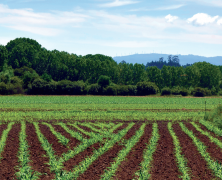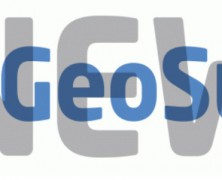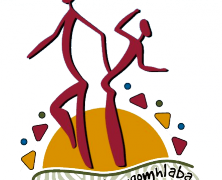A review of the GEMAS Atlas by Steve McGrath, one of the top soil scientists in Europe, on the August issue of Elements Magazine “Social and Economic Impacts of Geochemistry”. CHEMISTRY OF EUROPE’S AGRICULTURAL SOILS This two volume set (Parts A and B) arose from a project called the Geochemical Mapping of Agricultural and Grazing Land Soil in Europe (GEMAS). In this project, 2108 soil samples from ploughed land (0–20 cm depth)and 2023 samples of grazing land (0–10 cm depth) were collected in 2008/9 over an area of 5.6 million km2, at a density of about 1 per 2,500 km2. This was accomplished by a tremendous consortium of European national geological surveys, geologic institutions, academics, and industry. These groups used the same sampling protocols, with chemical analyses of all samples being carried out at specific labs. This ensured maximum comparability of the results from 33 countries across Europe. Oh, except Albania, Belarus, Malta, Moldova and Romania, which appear as blank spaces on the maps. Others outside Europe were also involved, from Australia, Canada and New Zealand. It was a truly international effort. I hear you ask, “What chemical analyses did they make on these samples?” Well, quite a lot: too many to list here, in fact. In summary: total elemental analysis for 41 elements, aqua regia extractions for 53 elements, pH, effective cation exchange capacity (eCEC), total carbon, total organic carbon, lead isotopes, magnetic susceptibility, partial extractions for 56 elements, percent clay, and solid–liquid partitioning of elements. A real data-fest! Apparently, the project is not finished: for example, Sr isotope data are now being collected. Keep reading… Download the...
The new Video “EL MAPA GEOLÓGICO: Dibujando la piel de la Tierra” by IGME
posted by EuroGeoSurveys
The Geological Survey of Spain, the Instituto Geológico y Minero de España (IGME), published a new informative video “EL MAPA GEOLÓGICO: Dibujando la piel de la Tierra”, currently available in Spanish language and soon in English and French. The video gives an insight on how the Geological Maps are created and the work done by geologists in this...
Unconventional hydrocarbons (UHC) – The Polish experience in the European dimension
posted by EuroGeoSurveys
The conference “Unconventional hydrocarbons (UHC) – The Polish experience in the European dimension”, organized by the Polish Geological Institute, focused on providing experts with insights and analysis about the Polish experience with Unconventional hydrocarbons and how this experience may help to provide valuable direction for the future of the Energy Union. Mr. Verbruggen, President of EuroGeoSurveys (The Geological Surveys of Europe) and Director of the Geological Survey of Ireland, was invited to be part of the High Level Panel of speakers at event. During its presentation, Mr. Verbruggen presented EuroGeoSurveys and its field of action, geosciences research, highlighting how EGS provides unbiased scientific advice to support EU policy makers and society at large. The estimation of shale gas resources in Europe still varies to a large degree since there are no production experiences and very limited exploration, leading to large uncertainties. This is the reason why the EU needs consistent pan-EU data sets and uniform estimation principles. A new EGS project “EUOGA”, in collaboration with the Join Research Centre (JRC) of the European Commission, led by GEUS and TNO, has the aim to mainly fill these “data gaps” by providing a comprehensive overview of current knowledge on Shale Gas potential areas in EU/EGS member countries. The project will develop a database for further collaboration and research. Mr. Brodzinski, Under-Secretary of State and Chief National Geologist of the Ministry of Environment of Poland, gave a talk about UHC in Poland. By producing UHC, viable alternative for imported energy carriers, Poland is improving the country’s energy security and fostering the economic growth, competitiveness and energy efficiency. According to scientific research, it has been demonstrated that UHC are considered as viable alternative for Poland because they are environment-friendly source of energy, potentially feasible, and enhance energy security....
35th International Geological Congress: Geoethical perspectives on meeting the resource needs of future generations
posted by EuroGeoSurveys
...
EU minerals information freely available online – The results of the Minerals4EU Project at the final Conference
posted by EuroGeoSurveys
The final Conference of the Minerals4EU Project took place on the 25th of August in Brussels, at the Royal Belgian Institute of Natural Sciences. The results of the project were presented to stakeholders, including representatives of the minerals industry, governments and EU Institutions. Almost 100 participants took part in the event. Sustainability, interoperability and knowledge are the keywords of Minerals4EU. The Minerals4EU products form together a platform of distribution of information on minerals that benefits the whole of Europe now and in the future. The EU Minerals Knowledge Data Platform allows stakeholders to search, view and acquire standardized geo-resource and related data, freely accessible. The interoperability among countries is guaranteed as the platform is built in the framework of the INSPIRE Directive (Infrastructure for Spatial Information in Europe). For the first time, a European digital Yearbook for Raw Materials is available for consultation online. The Yearbook, which includes 65 commodities from 40 EU and non-EU countries providing a wide range of data never collected before, will be officially presented and launched on the 15th October 2015 in Brussels at the “Raw Materials Diplomacy Dialogue between the EU and the advanced mining countries” event. David Ovadia, Exploitation Manager of the project, illustrated the structure of the Permanent Body that will allow the sustainability of Minerals4EU. As a legal entity under Belgian law, the permanent body will count on a small bureau of skilled staff co-located at EuroGeoSurveys in Brussels, acting as access point to a broader network of members. The bureau will therefore assist the Network in providing data, expertise, etc. Such a structure will assure that the project results will not be lost, but will survive to serve European policy makers, investors, citizens, scientists and tackle the challenges of the minerals industry. Furthermore, the...





